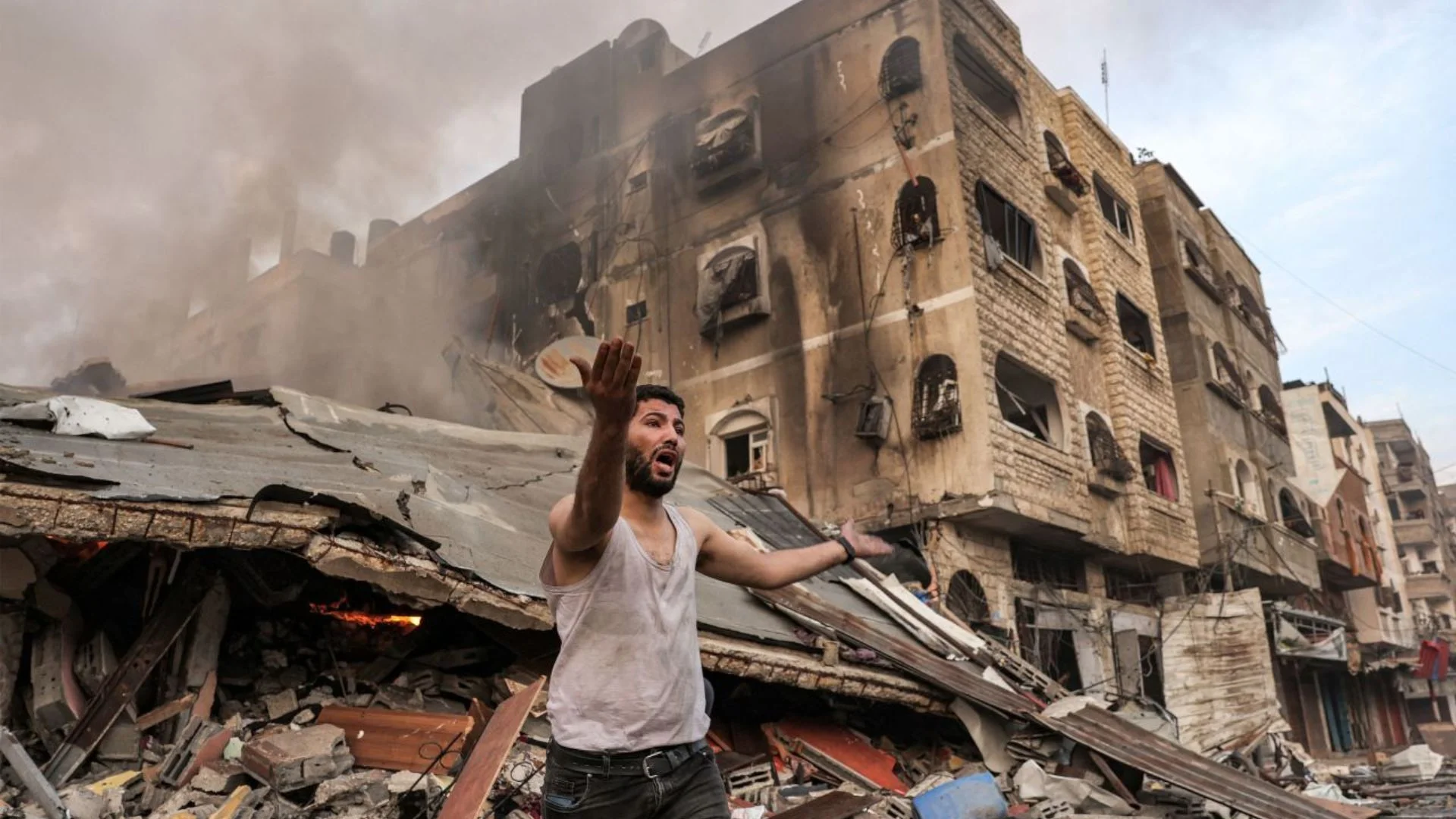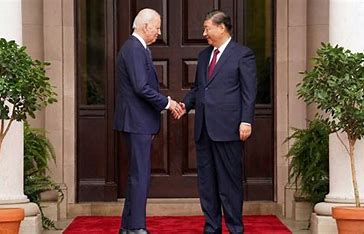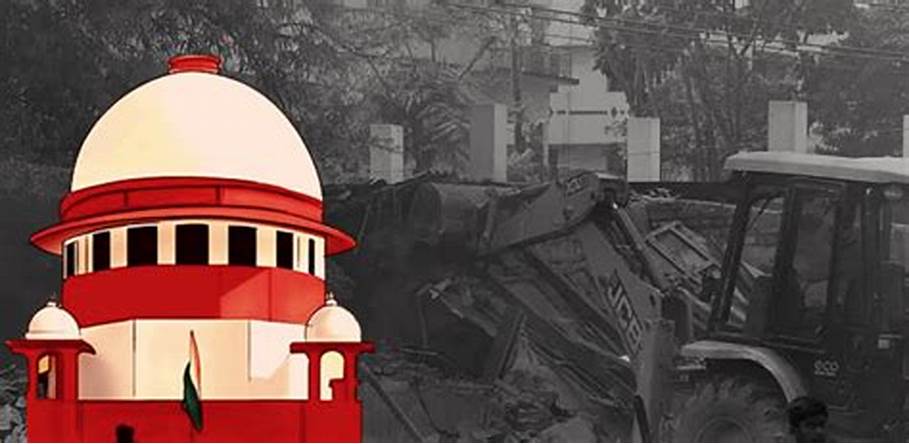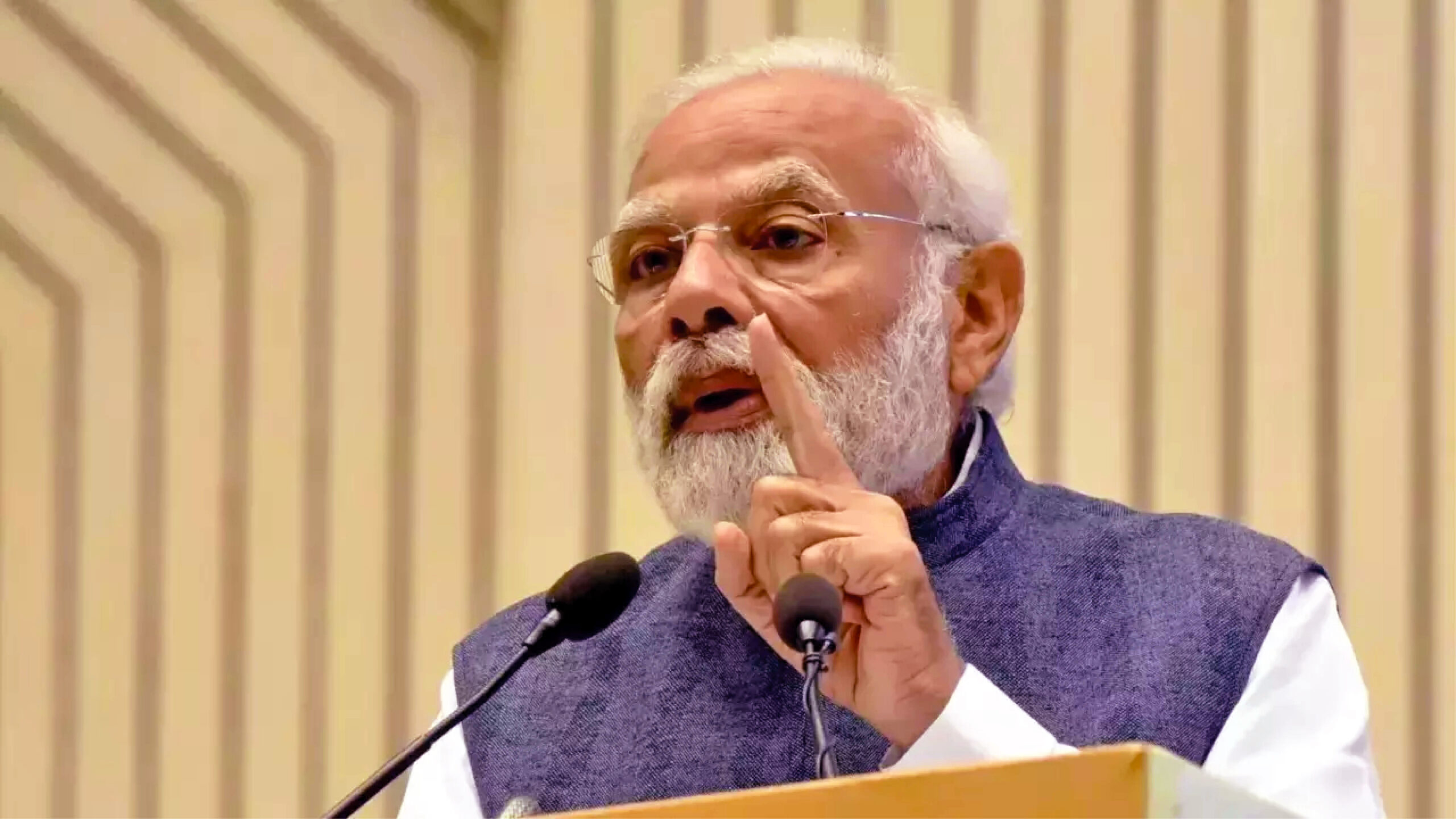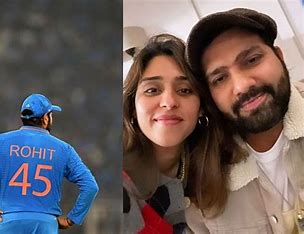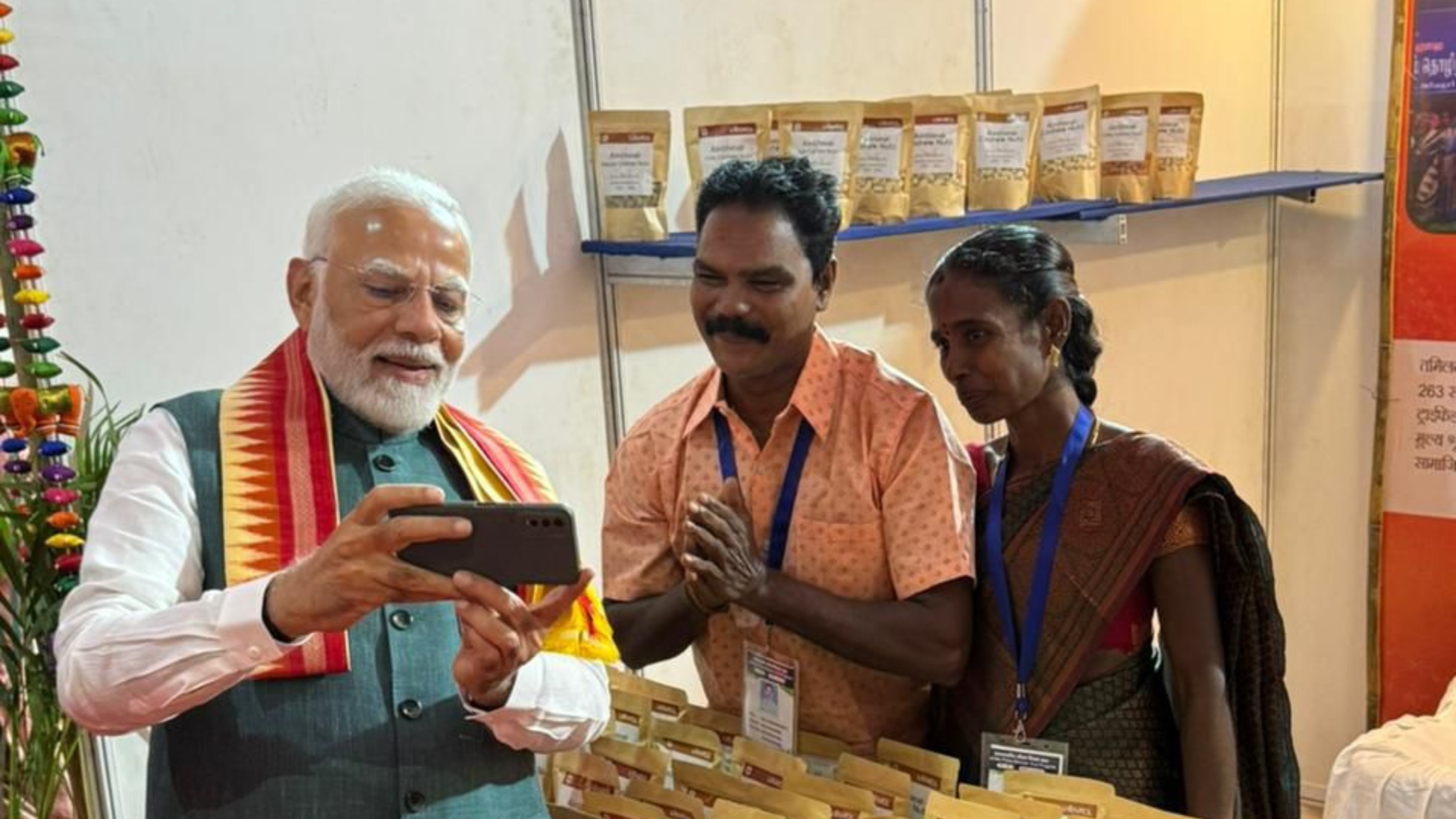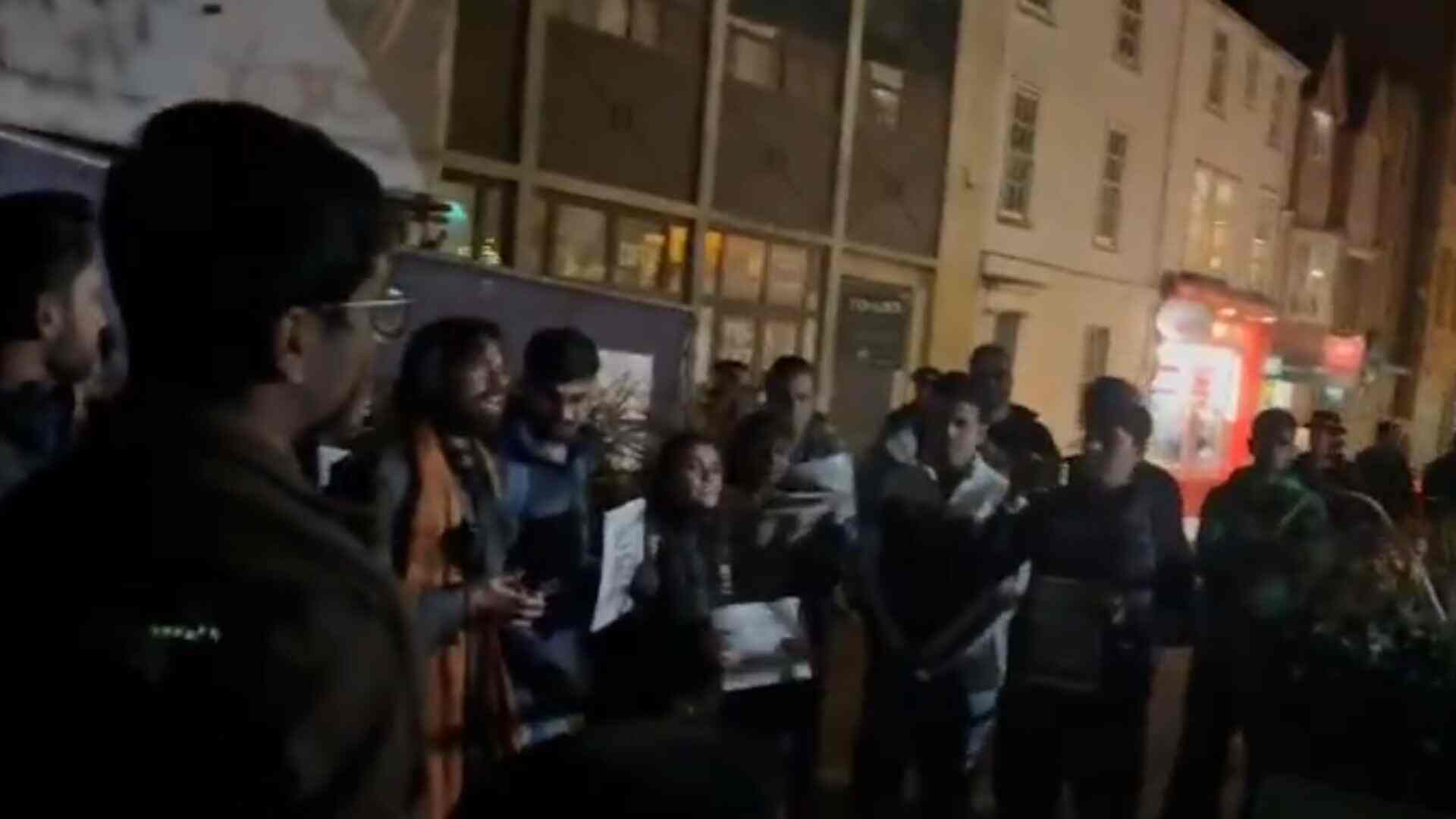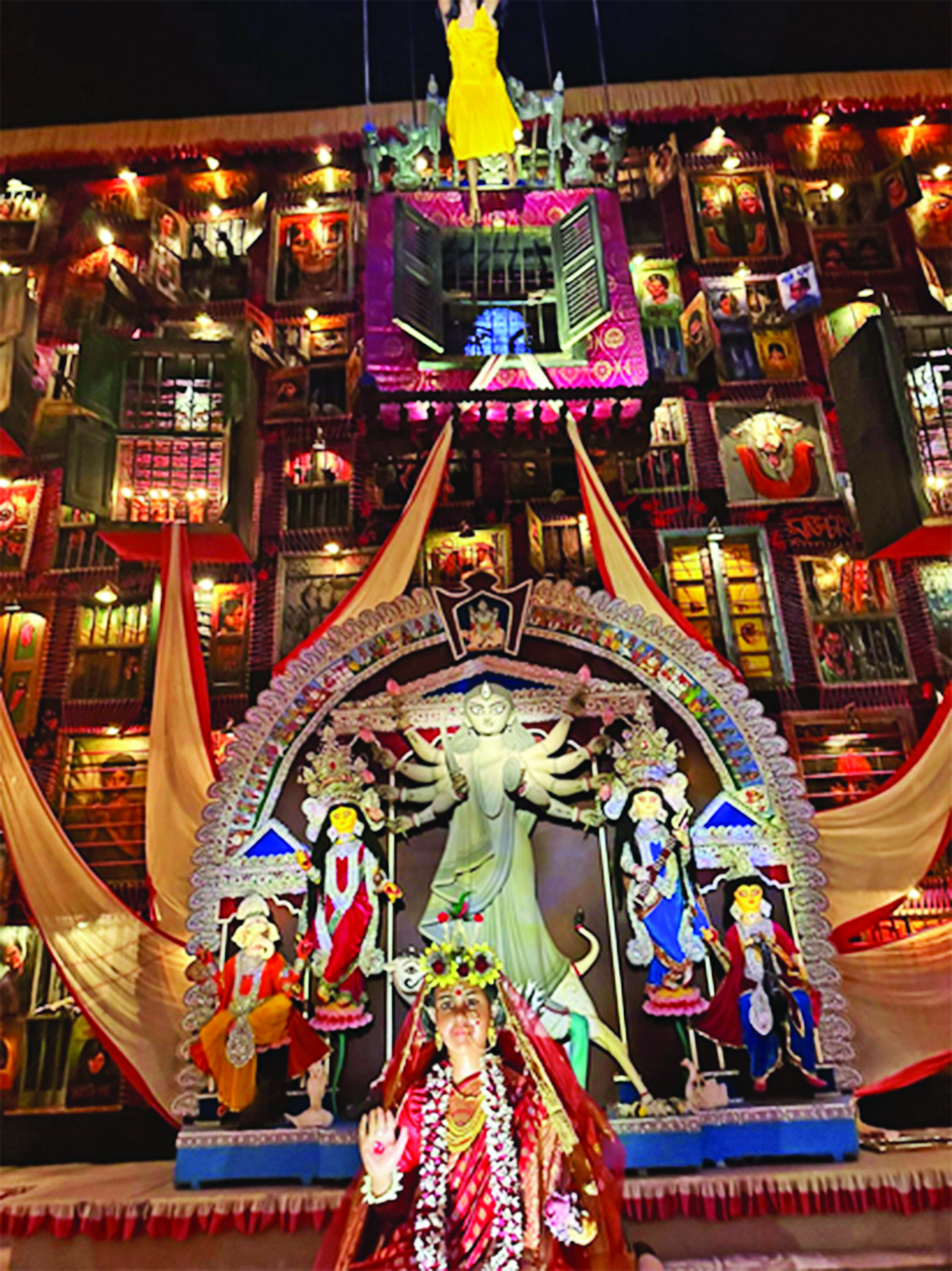
Bengalis have a special place in their hearts and homes for Goddess Durga, a representation of “Nari Shakti”, the feminine strength and power. Durga is an essential component of every Bengali home in the state of West Bengal; she is not only a goddess to be worshipped in temples. Durga, also known as “Maa Durga,” is revered as a motherly figure, and people look forward to her advent each year during the Durga Puja season.
Preparations for the grand celebration begin months in advance, with every member of the household contributing to the planning and execution. Durga Puja is a communal effort that fortifies cultural and familial ties, from making the idol to adorning the pandal and planning cultural events. The philosophy of Durga Puja profoundly influences the daily lives of Kolkata’s people, both during the festival and throughout the year. She represents the interconnectedness of all life and the idea that divinity can manifest in various forms, both gentle and fierce. Durga’s ten arms symbolise her ability to multitask and her readiness to assist her devotees. During the festival, the city comes alive with a sense of unity, artistic expression, and devotion. The intricate and artistic pandals become a canvas for creative expression and social commentary, reflecting contemporary issues and cultural themes. It instils a deep sense of community and social responsibility. It’s a time when people from all walks of life come together, transcending barriers of class, caste, and creed, to celebrate the goddess and her message of good triumphing over evil.
Although Pujo is celebrated almost everywhere with a Baangali diaspora, it is a popular saying among probashi Baangalees (Bengali diaspora) that the Pujo of Bengal will forever remain one of a kind. People from faraway corners of the world come to witness the grandeur with which we celebrate Uma. Last year, Durga Pujo was awarded the title of being a UNESCO cultural heritage. Being a “cultural” heritage, the festival transcends from being just restricted to religious groups and emerges as a unifying force for the entire demography of West Bengal. The “one-of-a-kind” label that the city’s celebration gets is owed partly to the unique practice of setting a theme for different pandals across. A select few commercialised pandals in the main city attract lakhs of people for seven days all round the clock. The commercialization of Durga Puja pandals has also raised concerns. The emphasis on opulence and extravagance sometimes overshadows the core values and spiritual essence of the festival. The pomp of the pandals often obscures the simple and traditional clay pratima (the idol), and in turn, the artists who toil for months to create them.
Every rite and ritual performed during Durga Puja is a true reflection of the social cohesion. This starts from the making of the idol, the clay which is used to create the goddess is brought from the River Hooghly or the banks of Ganga. The mud from the river bank contains the imprint of the human lives that it touches, to this is added cow dung and cow urine. Then soil is gathered from outside brothels called “ Nishiddho Pallis” to start shaping the goddess. After the mud is collected, the Kumhars, a caste traditionally engaged in the art of pottery and sculpture for generations. In Bengal’s Kumartuli, where only Kumhars reside and carry on with their hereditary occupation, provides the largest space for the making of the clay Pratima. Their art is not simply a result of their caste, it is also due to modern day economic demands. They redefine caste identities and emerge as a business-minded group of individuals who continue to employ their caste occupation for their own benefit and for the greater cultural celebration of the state.
One of the best Pandal this year was a pandal at Kashi Bose Lane,Hatibagan. A simple yet elegant bare bamboo structure, depicting a brothel-like setting, had an entrance with a child’s face embedded in a gunny bag. The eerie background score was cries of a woman narrating her perils as a victim of trafficking and sex work. The hollow inside of this vast architecture had oxymoronic photographed portraits of young girls with beautiful smiles.
Maa Durga resides in every woman- the women of Bengal are the Durgas of Bengal. This is what has always been reiterated by the wise and old of the community. An attempt to question the dichotomy of the saying was bravely made. Active ignorance of the heinous crimes of child trafficking and child prostitution in the state, and the country at large, is nothing unseen. While we celebrate one woman for being the mother and the ultimate saviour, we deliberately try to look away from those who still suffer for their most basic rights of respect and dignity as a human being.
Another theme in tandem with Kashi Bose Lane was Pathurighata’s “Ritumati”, or the season of menstruation. Decorated with figurines of the female reproductive system, complete with a set of ovaries and uterus, the pandal showcased the menstrual cycle in a poignant way along with women from various walks of life, who menstruate. The main attraction was a symbolic representation of patriarchal rituals which forbid women from entering holy places, placed right in the middle of the pandal.
Although the attempt to issue gender disparity to scores of people was required and has ensured that they leave an impact on the crowd, to truly address something as grave, identities of these women from a political, social, and cultural angle need recognition. We cannot address gender inequality without addressing the prevailing caste and class intersection into the spectrum of gender discrimination.
The next pandal that did exactly the above was Naktala, presenting, probably for the first time, the life and forgotten histories of the refugees from East Bengal who first settled in the southern portion of erstwhile Calcutta. Constructed of broken houses, nameplates of aadi-kolkata (Old Calcutta) and real affidavits reconstructed to 6 feet long structures adorned the pandal. It is seldom that narratives of unheard are portrayed in the mainstream history of Bengal, resulting in their invisibilization from the memories of their countrymen.
Bengal, in popular portrayal, holds the image of being ahead of the times in terms of inclusivity, progression and empowerment. The land of Rabindranath Thakur and Matangini Hazra is a place of reverence, a place where all-inclusive art and culture flourishes. A place where there are equal rights for everyone. This image, unfortunately, is only skewed. This invisibilised communities has a considerable number of Dalit Hindus who were displaced from the main regions of Kolkata owing to casteism and petty politics.
Contrary to popular perception, casteism, Patriarchy and Elitism were never alien to the Baangali community. People with social capital and cultural hegemony have time and again flourished more than the ones who lack the same. The often-coveted discrimination and marginalisation has been able to percolate to the deepest levels of the administration, bureaucracy, media and even academia. The stark contrast between the two narratives remains unknown to the lot who celebrate the former image. Another trial at the caste question was made at Jorasanko Durgotsav which recreated Kantara with the aim of orating the evil of caste-based atrocities.
Last year, in places outside Kolkata, Maa Durga took the form of a sex worker. The makers of the idol simply wanted to give a voice to these people who are very much a part and parcel of the city life but still have to hide in dark alleys. In yet another instance, the Durga Pratima was in her Ardhnareswar Roop, making way for those of her children who are outcasts in today’s society. This year, when the city turned into a canvas for the artists, it was a gust of fresh air to see the biggest festival of the state acknowledge the exclusion of these various social groups and try to bring them to the forefront. Setting the theme for a pandal one year will not solve the problems that have been present for centuries, but accepting one’s faults is also the first step towards rectifying it. As Dashami approaches, the currents of Ganga will welcome Maa and the pandals will return to the bare bamboos that once held magnificent messages.
With the waters washing away the colour from Protima’s face, we can only hope that the impact that these pandals had on the crowds don’t have the same fate. This Bijaya may all evil, within and around us and the society, be immersed in the flow of the canvas of empowerment that we witnessed. May our dreams of equality and freedom turn into a reality.
Dr Aditi Narayani Paswan is Assistant Professor, Delhi University.
